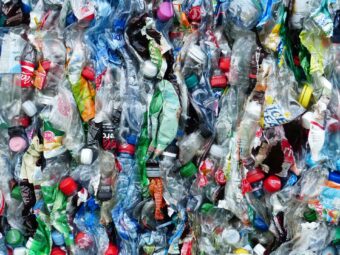Plastic becomes a problem only when it ends up where it doesn’t belong – in nature, the air, or, worse, in our bodies. In all other situations, it is a practical material that can be turned into raw feedstock in a sustainable recycling cycle, dispelling once and for all the “horror stories” and pessimistic scenarios surrounding its use. All it takes is imagination, knowledge, and the creation of processes that make this possible. That is where chemists at Northwestern University in the United States step in, with a discovery that could change the way we think about plastic recycling.
At the heart of this breakthrough lies a nickel-based catalyst: inexpensive, widely available, and extremely powerful. It selectively breaks down polyolefins – the type of plastic that makes up nearly two-thirds of global plastic consumption. Most importantly, this innovative catalyst enables recycling even when the waste stream is unsorted, meaning that industrial users could apply it to large quantities of mixed plastic waste without the painstaking and costly process of separating different types.

Once the catalyst does its job, low-value solid plastics are transformed into liquid oils and waxes, which can later become higher-value products such as lubricants, fuels, and even candles.
Professor Tobin Marks, the study’s lead author and a world-renowned expert in catalysis, explained that one of the biggest obstacles in plastic recycling has always been the meticulous sorting of waste by type. Their new catalyst, he said, could bypass that complicated and labor-intensive step, making recycling more practical and economically viable.
A Precise “Cut” Through Plastic Waste
The challenge with polyolefins is their extraordinary chemical toughness – they are made of small molecules held together by strong carbon–carbon bonds. Unlike other polymers, they lack weak spots that catalysts can attack. This is why recycling rates for these plastics remain dismally low worldwide – less than 1 to 10 percent – despite annual production exceeding 220 million tons.
Traditional recycling methods have not been effective. Mechanical shredding and melting result in low-quality materials, while thermal treatment requires temperatures of 400 to 700 degrees Celsius and massive amounts of energy.
The Northwestern team, in collaboration with researchers from other institutions, tackled the problem through hydrogenolysis – a process that uses hydrogen and a catalyst to break plastic down into smaller, useful molecules. But instead of expensive precious metals like platinum or palladium, they developed a catalyst from cationic nickel, a cheap and abundant element.
Their solution is brilliant: a molecular catalyst with a single active site. Instead of striking blindly like a blunt tool, this catalyst works like a precision scalpel, selectively cutting carbon–carbon bonds.
The results are remarkable: the process operates at temperatures 100 degrees lower than other methods and under half the hydrogen pressure. It requires ten times less catalyst, yet its activity is ten times greater. In short – it wins on every front.
And then comes the almost unbelievable part. One of the biggest challenges in recycling has always been contamination by PVC. This toxic polymer typically deactivates catalysts and disrupts the entire process. But the new catalyst not only withstood the presence of PVC – it actually performed better in those conditions. Even when a quarter of the waste mixture was PVC, the catalyst’s activity increased.
“That’s crazy. Nobody expected that,” said another researcher Yosi Kratish
The study, titled Stable Single-Site Organo-Nickel Catalyst Preferentially Hydrogenolyzes Branched Polyolefinic C–C Bonds, was supported by the U.S. Department of Energy and Dow Chemical, and published on September 2 in Nature Chemistry.
Looking at all of this, it’s hard not to feel optimistic. We may be on the verge of a future where mixed plastic waste is no longer seen as an unsolvable problem, but rather as a valuable resource.



